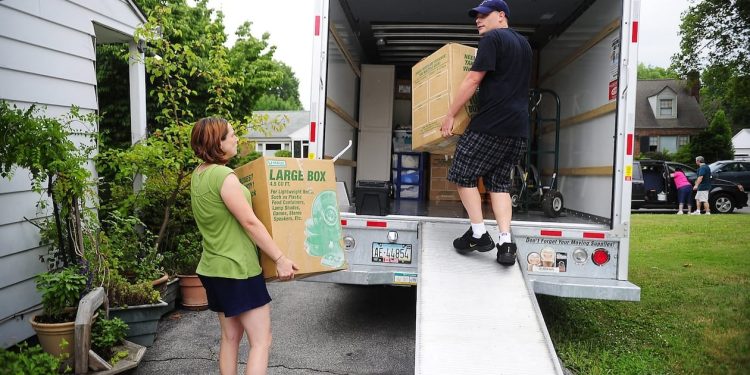The Show Me State, Missouri, is known for its friendly people, beautiful landscapes, and rich history. However, beneath the surface, a concerning trend is emerging. Many towns across Missouri are experiencing population decline, with residents packing their bags and seeking opportunities elsewhere.
This exodus is driven by a complex web of factors, ranging from economic hardship and environmental concerns to high crime rates and crumbling infrastructure. Let’s take a closer look at five Missouri towns where residents are leaving at an alarming rate, and explore the reasons behind this migration.
Moberly: A Once-Bustling Railroad Hub Now Facing Economic Strain
Moberly, a city nestled in central Missouri, was once a thriving railroad hub. However, with the decline of the railroad industry, the town’s economic engine sputtered. Today, Moberly grapples with high poverty rates, limited job opportunities, and a struggling housing market. Many residents, particularly young families, are drawn to areas with better career prospects and a higher quality of life. Moberly is experiencing a decline in population and an increase in average age, alongside a notably high crime rate of 1,027 crimes per 100,000 people in 2023, significantly higher than the state average of 573 crimes per 100,000 people. Additionally, the town faces a poverty rate of 22.9%, compared to the state average of 13.4%. As a result, the population has decreased by 4.4% as residents relocate in search of safer and more affluent areas.
The Kennett: A Once-Thriving Delta Town Grappling with Environmental Issues
The fertile Mississippi Delta was once the lifeblood of Kennett, Missouri. Agriculture was the mainstay of the economy, but intensive farming practices have taken a toll on the environment. Water contamination and soil degradation threaten not only the town’s future but also the health and livelihoods of its residents. As a result, many families are choosing to relocate to areas with a cleaner environment. Kennett’s population is aging and shrinking, having a decline of 12.5%. Its high poverty rate is 28.9% (compared to the state average of 13.4%) and its median household income is $32,895 (smaller than the state average of $62,979).
Poplar Bluff: A Crossroads Community Facing Uncertainties
Poplar Bluff, located at the confluence of two rivers, has historically been a center for manufacturing. However, the decline of manufacturing jobs has left the town reeling. Empty factories and shuttered businesses paint a grim picture, leading to a domino effect of social and economic problems. Crime rates have risen, and the quality of education and housing has suffered. Residents are left wondering if Poplar Bluff can adapt to a changing economy. Poplar Bluff is grappling with significant challenges, including a poverty rate of 31.4%, much higher than the state average of 13.4%, and a median family income of $30,731, which is less than half of the state average of $62,979. The town’s population has steadily declined by 3.6%, driven primarily by the departure of young and educated residents.
Sedalia: A Historic Town Struggling with Crime and Drugs
Sedalia, a charming town steeped in history, faces a different set of challenges. The sedalia’s idyllic facade masks a harsh reality: the town struggles with a high crime rate, particularly drug-related offenses. This cycle of poverty and addiction creates a sense of insecurity and hopelessness, driving residents to seek safer communities for themselves and their families. Sedalia is struggling with a stagnant and declining population, marked by a high unemployment rate of 7.1%, significantly above the state average of 4.2%. The town also has a lower level of educational attainment, with only 16.4% of residents holding a bachelor’s degree or higher, compared to the state average of 30.4%. Consequently, the population has decreased by 0.4%.
St. Louis: The Plight of a Major City with Deep-Rooted Issues
St. Louis, Missouri’s second-largest city, presents a more complex case. Urban decay, with abandoned buildings and vacant lots, paints a bleak picture. Crime rates are high, and many residents grapple with poverty and limited opportunities. Segregation further divides the city, creating disparities in access to quality education, healthcare, and safe neighborhoods.
However, St. Louis also holds a spark of hope. Revitalization efforts are underway, with a focus on attracting businesses, improving infrastructure, and fostering a sense of community. Engaged residents are working to create a brighter future for the city.
Why Does This Matter? The Broader Context of Population Decline
The exodus from Missouri towns has far-reaching consequences. Local businesses lose their customer base, forcing them to close their doors. Strained public finances make it difficult to maintain essential services like infrastructure and public safety. These towns lose the vibrancy and diversity that comes with a thriving population.
A Look Ahead: The Future of Missouri Towns
There is no one-size-fits-all solution to the challenges facing Missouri towns. However, several potential strategies could spark revitalization. Diversifying the economy beyond a single industry can create more job opportunities. Investing in education and job training can equip residents with the skills they need to succeed in the modern workforce. Sustainability efforts can address environmental concerns and improve quality of life.
State and federal support can play a crucial role in providing resources for infrastructure development, education initiatives, and attracting new businesses. Most importantly, the key to a successful turnaround lies in community engagement. Local leadership, coupled with the active participation of residents, is essential for crafting a vision for the future and developing a roadmap to achieve it.
Conclusion
The population decline in Missouri towns is a cause for concern. However, it is not an insurmountable challenge. By understanding the root causes of this exodus and implementing effective solutions, these towns can create a more prosperous and vibrant future. With a renewed focus on economic opportunity, environmental sustainability, and community well-being, Missouri towns can once again become places where people choose to live, work, and raise their families.










